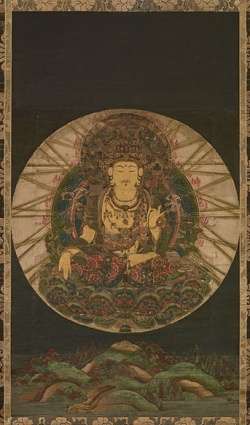Kyōto
Kyoto (京都市 Kyōto-shi) (Japanese pronunciation: [kʲoːꜜto] ( listen)) historically known as Meaco is a city located in the central part of the island of Honshu, Japan.
It has a population close to 1.5 million. Formerly the imperial capital of Japan for more than one thousand years, it is now the capital city of Kyoto Prefecture located in the Kansai region, as well as a major part of the Kyoto-Osaka-Kobe metropolitan area.
Capital of Japan from 794, when moved from Nara (q.v.) until Meiji Restoration in 1868, when capital moved to Yedo, renamed Tokyo.
The religious centre of Japan. Laid out on grid principle with Palace in centre in a plain with hills around of which chief is Mount Hiei (q.v.), the home of Tendai-Shū.
The city contains a high proportion of Japan’s greatest Bst. monasteries.
These include Kiyomizu-dera of the Hossō-Shū; the East and West Hongwanji, of the Shin-Shū; Myōshin-ji (q.v.), Shōkoku-ji (q.v.). Daitoku-ji (q.v.) and Nanzen-ji of Rinzai Zen-Shū; Manpukuji of the Ōbaku sect of en-Shū; Chion-in of Jōdo-Shū, and Tō-ji of Shingon-Shū.
The city, containing art treasures of inestimable value, was saved from destruction by American bombing in the war by the passionate plea of the late Langdon Warner, then Curator of the Fogg Museum of Harvard University.
